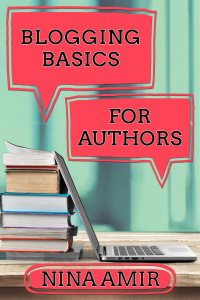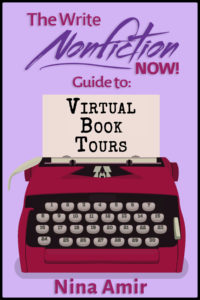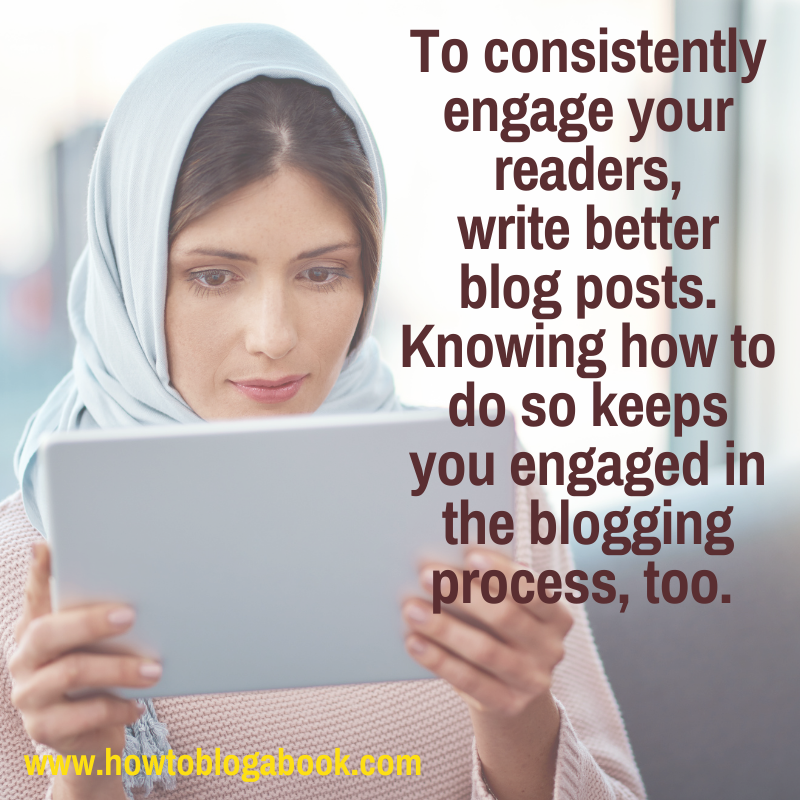Whether you’re blogging your book, writing blog posts to connect with your audience, or publishing posts to build expert status, it can seem challenging to consistently keep your content fresh and engaging. But you can improve your blog posts using the five quick tips that follow. In addition, these tips help reduce the stress of maintaining your blogging schedule and momentum and keep you engaged, too.
1. Blog with Purpose
At their inception, blogs were a chronological collection of online diary entries. However, that type of output isn’t sustainable and doesn’t help you build an audience to attract readers for your book. Your blog content needs to have a cohesive thread tying it together to attract a reader’s attention and keep them coming back for more.
Each new post needs to have a purpose. Why are you writing it, and what benefits does it provide your reader? Using the Pareto Principle, 80 percent of your content should be related to your subject matter expertise and book niche. That gives you the leeway to supplement your blog-a-book content or other blogging plans with additional topics you’re passionate about.
Additional Resources:
- Remain Passionate and On Purpose to Achieve Inspired Blogging Results
- Use Your Expertise to Start a Blog and Find Your Audience
2. Blog with Passion
I’ve encountered many budding authors with half-finished manuscripts. They started a book project without the commitment to see it through to the end and lacked the passion for getting their words read. Rather than wasting time on a project you don’t complete, identify a topic you have the enthusiasm to take from start to finish.
 To find that topic, answer these questions:
To find that topic, answer these questions:
- Why do you want to write the book?
- How will your book benefit your audience?
- What problem are you solving?
- Why do you feel passionate about this topic?
If you don’t have a long list of notes under these headings, think about another book idea. The temptation is to just start writing, but if you haven’t answered these critical queries, there’s a danger you’ll run out of steam before you finish your first blogged book draft. You’ll also lose interest if you are blogging to build platform or develop authority online.
Investing time in planning ensures you have a solid idea you’re passionate about. And there’s no better way to test that concept than blogging a book. You should brim over with post ideas—many more than will fit in your book.
Additional Resources:
- Build Your Book Business on Your Passions and Strengths
- Passion, Subject Knowledge, Self-Knowledge, and Blogging Books
- Jonathan Milligan founded Blogging Your Passion to help bloggers become better bloggers
3. Turn each Blog Post into a Marketing Opportunity
Imagine a reader stumbles across two different blogs on the same topic. One author broadcasts the intent to write a book while the other doesn’t mention it. Who do you think is more likely to attract an audience’s attention and begin a loyal following? (The former, of course!)
Read this article to find out how to use Bottom of the Post Images and Text to Promote your Blogged Book. It’s one of the most straightforward bits of book marketing you can do.
Additional Resources:
There are many other ways to use your blog as a marketing opportunity. These include optimizing your posts for the search engines (SEO), creating a flow of content to your social media streams, and gaining the attention of influencers within your niche as an entryway to guest blogging opportunities.
- Is Guest Blogging Still an Effective SEO Technique?
- Tips on Crafting an Effective Guest Blogging Pitch
- How to be the Best Guest Blogger
- How to Create a Social Media Marketing Plan for Your Blog
- How to Leverage Influencers to Expand Your Blog’s Reach
4. Write Catchy Headlines
Your blog headlines are the hook that can reel in your audience. There are different schools of thought about whether you should write your headline before your article or after it’s written. You should do both.
 Clickbait headlines aside, a headline shows an audience what you’ve committed to delivering in your post. Its role is to clarify what your article is about and what benefit your reader will get from reading it. If you’re sharing your blog posts across social media and not getting many clicks back to your post, your headlines could be the problem.
Clickbait headlines aside, a headline shows an audience what you’ve committed to delivering in your post. Its role is to clarify what your article is about and what benefit your reader will get from reading it. If you’re sharing your blog posts across social media and not getting many clicks back to your post, your headlines could be the problem.
Before you start writing, develop a draft headline that conveys your posts’ purpose and includes the audience benefits. Then, during the article writing process, make sure your content supports the headline. That headline acts as an effective compass to make sure you’re always heading in the right direction. Of course, you can adjust your headline or revise your content during the process, but they must work in tandem.
Once your article is finished, go back and refine your headline to ensure it’s optimized for SEO. It should be a mix of emotional triggers and powerful words.
- Include nouns and adjectives to help create an emotional connection to your article, e.g., quick (adjective) and quality (noun). These also help convey the post’s benefits.
- Power words command your reader’s attention and compel them into action. Therefore, each of your headlines will be more effective when you include a verb, e.g., improve, grow, build.
Additional Resources:
- There are multiple apps and tools available to help you craft better headlines. One I’ve found helpful and easy to use (and free) is CoSchedule’s headline analyzer. Just enter your headline, and they’ll assess its effectiveness and recommend improvements.
- Another free resource is Copyblogger’s How to Write Magnetic Headlines free ebook
5. Create Scannable Blog Posts
A blog post without scannable headings and subheadings, concise paragraphs, and thoughtfully laid out text can make your content difficult to consume.
These points are even more relevant now that an increasing number of readers access content on their mobile devices. The smaller screens make long blocks of text off-putting to a blog reader. The key is to segment your content into bite-size pieces, so it’s easy to digest it no matter what device they’re using.
Using different layouts helps keep your reader engaged by reducing repetitiveness as they scan a page. For example, you can use numbered or bullet-point lists to deliver critical information or include quotes, images, or social media boxes to add variety to your post.
Additional Resources:
- Problogger put together a comprehensive list of 18 ways to create scannable content.
Blogging takes effort, consistency, and planning. But when you use these five quick tips, you can maintain the momentum your website needs, retain your interest, and, most importantly, keep your readers coming back for more.
What tips help you write posts that captivate you and your readers? Share your ideas and suggestions in the comments below. And please share this post with another blogger.
About the Author

Jay Artale abandoned her corporate career to become a digital nomad and full-time writer. She’s an avid blogger and a nonfiction author helping travel writers and travel bloggers achieve their self-publishing goals. Join her at Birds of a Feather Press where she shares tips, advice, and inspiration to writers with an independent spirit.
Photo courtesy of msgrafixx.


Leave a Reply